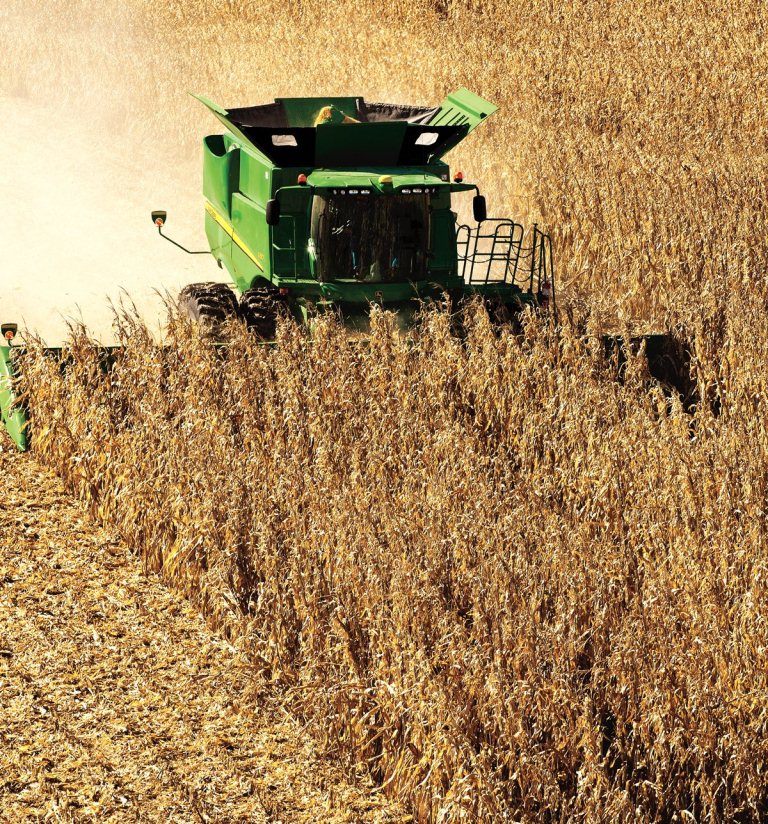August 13, 2012

As harvest begins in drought-damaged cornfields, product specialists from John Deere Harvester Works have released some tips and recommendations for maximizing combine performance.
1. Inspect the combine for worn concaves and threshing elements and replace as needed. Make sure the concaves are level and zero them to the rotor. This will give a more accurate setting/reading for concave clearance.
2. Inspect the Feed Accelerator and Stone Trap (FAST) and discharge beater wings for wear and replace if showing significant signs of wear. Be sure to run the FAST on low speed to minimize breaking of cobs before they enter the separator. Make sure after the concave is zeroed and leveled that it is open to deliver whole or broken cobs and minimize cob splits.
3. With uneven cob and ear sizes, start at slower rotor speed, increase rotor speed to increase threshing and separation ability until grain damage is unacceptable, and then slow speed back down in small increments until damage is acceptable.
4. To help increase separator capacity, make sure separator grate spacers are installed between the grates and the rail. This will help move threshed cobs through the separator to eliminate them from the grain tank sample. Too much cob in the tank can be cured by reducing the small pieces of cob that get in the cleaning shoe from the start. Round bar concave inserts in the front concave will help increase threshing ability with inconsistent cob sizes and diameters. This will increase the area for the smaller cobs to be threshed. Grain damage could occur from this, so you need to monitor grain tank sample.
5. For corn heads, check to make sure deck plate spacing is close enough that the smallest ears are not shelled at the head or broken off. Adjust gathering chain lugs so they are straight across from each other to aggressively move trash through the head. Run your back shaft speed as slow as possible to minimize breaking off of stalks and increasing your trash intake.
6. Finally, select your ground speed so the separator can be as full and consistent as possible. Crop conditions within the same pass will be very inconsistent. As you move from poor yielding conditions to better yields and vice versa, not changing speeds will lead to threshing and separating problems. You may need to make adjustments as you change varieties and fields.
These machine adjustments should help to optimize the combine’s performance, but the improvements will be based on local harvest conditions.
You May Also Like




